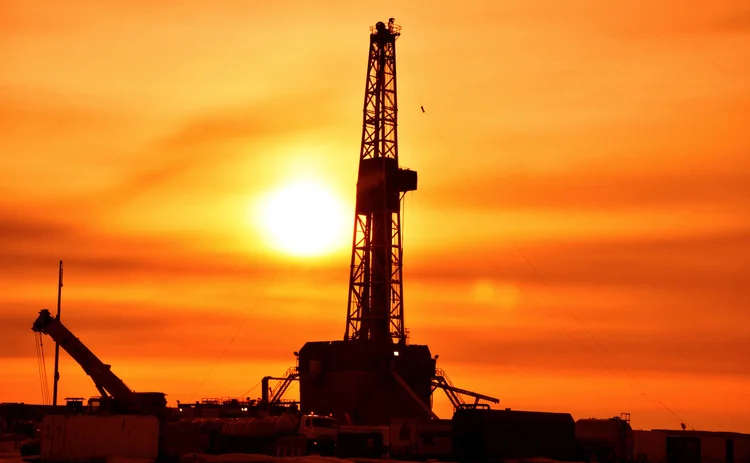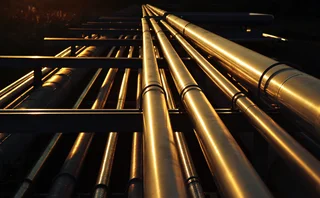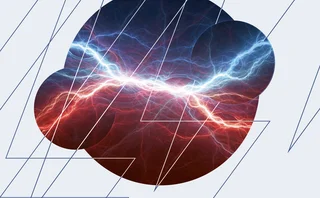
The shale revolution devours its children
After a few years of irrational exuberance, US oil drillers are feeling the pain

Revolutions, like Saturn, devour their own children.1 It is an observation made by a French revolutionary in the 1790s, shortly before his head was chopped off.2 But it applies equally well to the capitalist era in which we live.
Periods of disruptive economic change lead invariably to excesses, leaving many victims in their wake. First to fall are the beneficiaries of the ancien régime. Then, at some point, some of the revolutionaries are toppled too, usually those who moved ahead too far and too fast. When their day of reckoning arrives, it results in corporate failures and personal tragedies.
I can see this in my neighbourhood in the Houston metropolitan area. As the home base for numerous energy firms, Houston reaped the benefits of the huge technological revolution that took place in the US oil and gas industry in recent years: hydraulic fracturing, colloquially known as ‘fracking', combined with horizontal drilling. Together, these breakthroughs made it possible to access hydrocarbons in shale formations that had been previously too costly to extract, spurring a boom in oil and gas production and a frenzy of investment in US energy companies.
Today, when I look around, I see many houses on the market – when just 18 months ago there was no inventory and homes were being sold even before anyone could put up a ‘For sale' sign. Every day, news arrives about significant layoffs at energy companies. Many of my neighbours, who were riding the wave of the US energy industry revival, are now getting pink slips or being pushed into early retirement. The financial press is speculating about contagion spreading to banks with significant exposures to the energy industry.
The question on everyone's mind is how long the crisis will continue. Analysts have offered a series of time estimates for when to expect a rebound, but they resemble the horizon, receding each time we take a step closer. Personally, I am concerned that more pain is on the way. Barring some sort of unforeseen geopolitical developments or action by the Organization of Petroleum Exporting Countries (Opec), it looks like things will get worse before they get better.
This is due to the unique combination of factors that brought about the shale revolution – factors that are as much tied up with the US economy, the workings of the energy business and human nature as they are with geology and drilling techniques.
One such factor was the protracted period of low interest rates, which reduced the cost of capital to exploration and production (E&P) companies and allowed some of them – often small and medium-sized players with little to lose and the world to win – to raise their debt burdens to the levels that more prudent players would find intolerable. The climate of euphoria surrounding the shale boom created perceptions of a low-risk/high-reward opportunity, which looked like a great investment strategy in the environment of low yields, while warnings to the contrary fell on deaf ears.
That gold-rush environment led to a land grab, in which the E&P companies bid aggressively for oil and gas leases in the most attractive locations. Because of a quirk in the way such contracts are drawn up, a spike in the number of leases in some promising area tends to result in hectic drilling activity there some three to five years later. That's because a typical US lease contract is ‘held by production' – that is, if the lessee does not start drilling before the end of the so-called ‘primary period', the lease expires. That fuelled the situation we have today, with increased production volumes and lower prices.
The outcome of all this is that the US E&P industry has been cashflow negative since 2010, with some rare but notable exceptions among the better-managed companies.3 Industry veterans like to joke about ‘making up in volume what's lost per unit', but amid the excesses of the shale boom, the joke came close to being a standard operating procedure.
Producers rationalised their aggressive drilling strategy by arguing that, at some point, they would accumulate an inventory of wells with long-tail production flows, providing a cushion to support debt service requirements. This is where an element of irresponsibility crept into the picture. In fact, the industry had no long-term production data for shale rock formations when the boom started, so there was no way for the industry to be confident that long-tail volumetric flows would actually materialise. And even if they did, the E&P companies' cushion could quickly deflate under the pressure of growing production and falling prices.
In a nutshell, what the drillers were doing was the equivalent of the military manoeuvre known as la fuite en avant (an escape forward), a desperate act in which an embattled army, lacking better options, charges straight into the enemy's guns. Sometimes this works, but usually there are few soldiers left to celebrate.
It is often said that high prices are a cure for high prices and low prices are a cure for low prices. In the current environment, though, low prices of oil and gas have been leading to even lower prices. Each producer is trying to squeeze the last drop of crude and the last molecule of methane out of their existing wells to generate cashflows needed to support their debt burden. Costs are slashed along the entire supply chain by reducing headcount, renegotiating contracts with service providers and slashing capex budgets. This is often called ‘resilience', but one could equally well use the word ‘desperation'.
Eventually the market will balance, as it always does. The problem is that another danger is lurking on the horizon: economic growth rates are anemic across the globe, and there is a very real risk of another worldwide recession beginning in the next few months. This would change all the analysts' calculations and protract the period of pain.
As I write these words, the main glimmers of hope are coming from a potential agreement between the principal oil-producing countries to freeze or reduce their output levels. If this happens, equilibrium between supply and demand will be restored, and the industry will be taken off life support. But we have to remember that many oil-producing countries are not natural bedfellows and that the history of Opec shows production quotas are difficult to enforce.
So the shale revolution may continue to devour its children for some time to come – and those seeking bargains in Houston-area real estate may want to pay my neighbourhood a visit.
Notes
1. In Greek mythology, the Titan Kronos devoured his children at birth for fear that one of them would overthrow him. He became conflated with the Roman deity Saturn.
2. The remark is usually attributed to Georges Danton, who reportedly uttered it during his trial in 1794, though more likely it was first said by Pierre Vergniaud in 1793 (François-Auguste Mignet, Histoire de la révolution française).
3. This is according to US Energy Information Administration (EIA), which compiled data on cash from operations and major uses of cash for 127 oil and gas companies. While the EIA's analysis only covers the period from 2010 to March 2014, conditions have deteriorated further in the past two years.
Only users who have a paid subscription or are part of a corporate subscription are able to print or copy content.
To access these options, along with all other subscription benefits, please contact info@risk.net or view our subscription options here: http://subscriptions.risk.net/subscribe
You are currently unable to print this content. Please contact info@risk.net to find out more.
You are currently unable to copy this content. Please contact info@risk.net to find out more.
Copyright Infopro Digital Limited. All rights reserved.
As outlined in our terms and conditions, https://www.infopro-digital.com/terms-and-conditions/subscriptions/ (point 2.4), printing is limited to a single copy.
If you would like to purchase additional rights please email info@risk.net
Copyright Infopro Digital Limited. All rights reserved.
You may share this content using our article tools. As outlined in our terms and conditions, https://www.infopro-digital.com/terms-and-conditions/subscriptions/ (clause 2.4), an Authorised User may only make one copy of the materials for their own personal use. You must also comply with the restrictions in clause 2.5.
If you would like to purchase additional rights please email info@risk.net
More on Energy
ETRM systems 2024: market update and vendor landscape
This Chartis report evaluates energy trading and risk management systems that provide front-to-back, asset class-specific and geography-specific coverage, and considers the full energy trade lifecycle
CTRM systems 2024: market update and vendor landscape
A Chartis report on commodity trading and risk management systems that considers its different applications and addresses the market and vendor dynamics to determine the long-term and structural impacts of the overarching market evolution on the…
Energy Risk Commodity Rankings 2024: markets buffeted by geopolitics and economic woes
Winners of the 2024 Commodity Rankings steeled clients to navigate competing forces
Chartis Energy50
The latest iteration of Chartis’ Energy50 ranking
Energy trade surveillance solutions 2023: market and vendor landscape
The market for energy trading surveillance solutions, though small, is expanding as specialist vendors emerge, catering to diverse geographies and market specifics. These vendors, which originate from various sectors, contribute further to the market’s…
Achieving net zero with carbon offsets: best practices and what to avoid
A survey by Risk.net and ION Commodities found that firms are wary of using carbon offsets in their net-zero strategies. While this is understandable, given the reputational risk of many offset projects, it is likely to be extremely difficult and more…
Chartis Energy50 2023
The latest iteration of Chartis' Energy50 2023 ranking and report considers the key issues in today’s energy space, and assesses the vendors operating within it
ION Commodities: spotlight on risk management trends
Energy Risk Software Rankings and awards winner’s interview: ION Commodities








